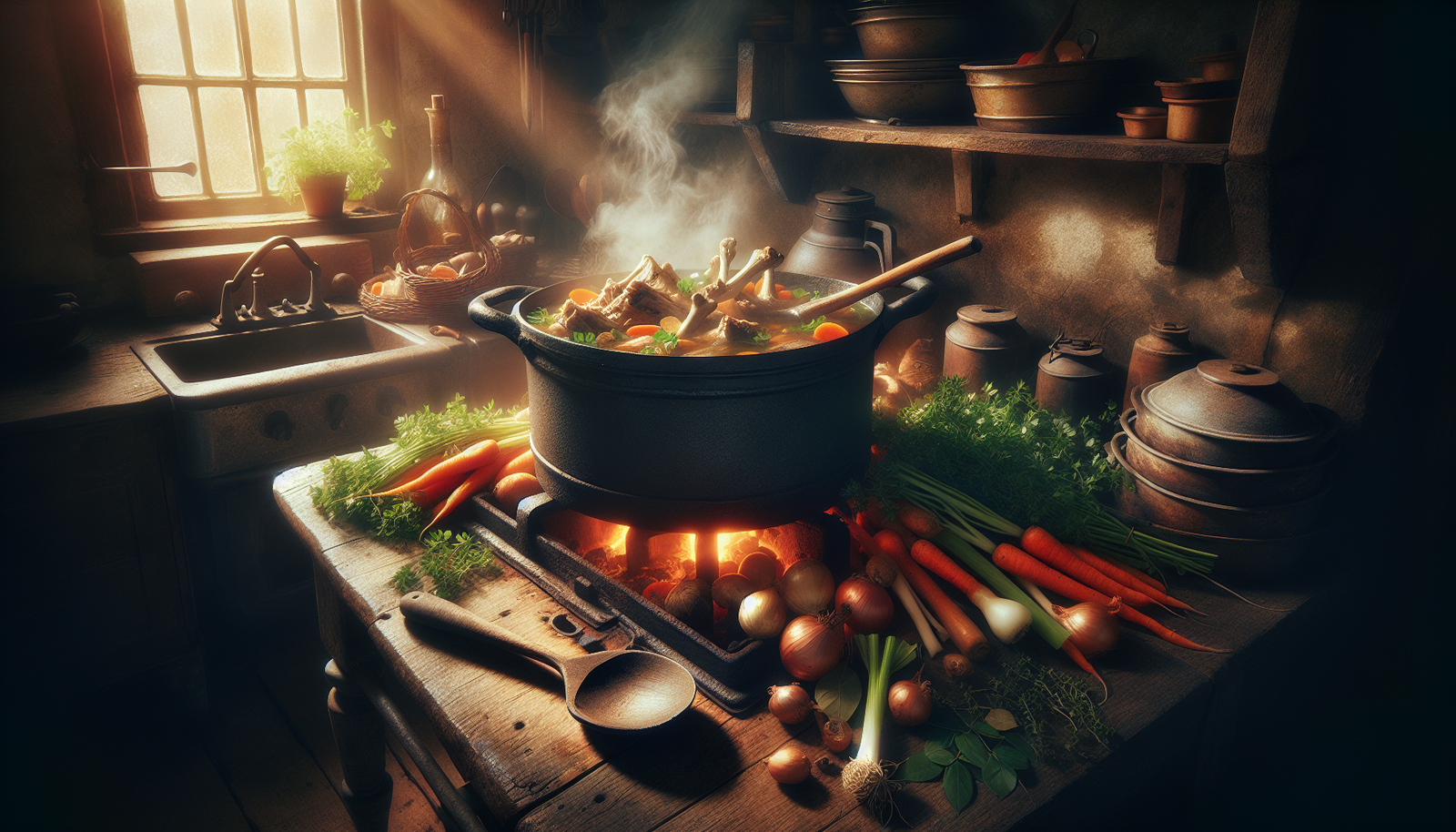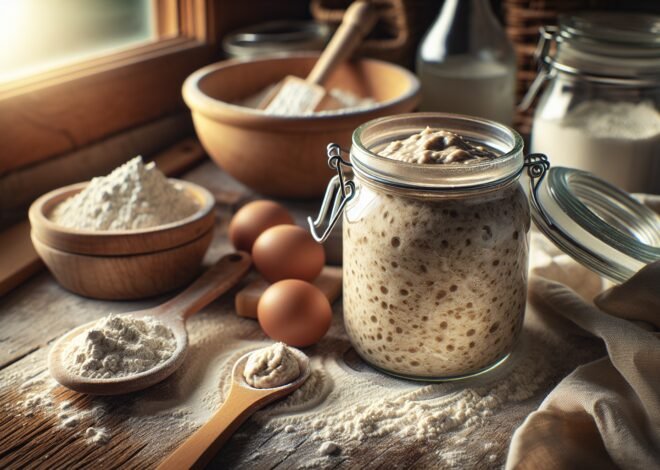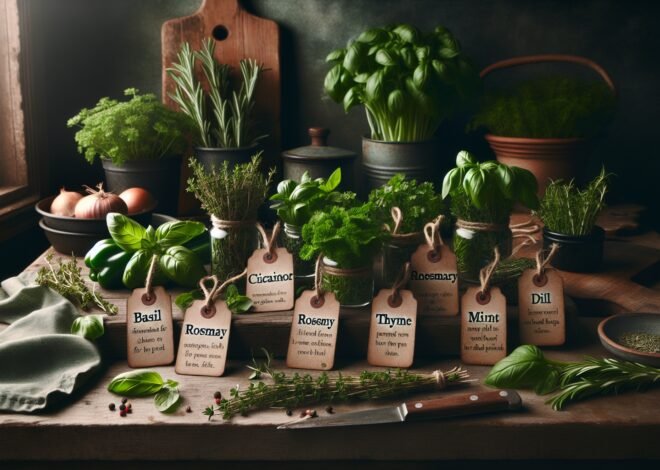
The Importance of Roasting Bones for Flavorful Stock
Roast bones for stock to unlock a deeper, richer flavor in your homemade broths. The caramelization process not only intensifies the taste but also infuses the stock with a remarkable depth that’s hard to achieve otherwise. By taking this extra step, you’re transforming a basic liquid into a culinary masterpiece that bridges the gap between a bland soup and a memorable dish. You will learn why roasting is essential, detailed steps to do it right, and its impact on your recipes. This technique might be the secret ingredient your kitchen’s been missing. Dive in to discover how to make your stocks unforgettably delicious.
Benefits of Roasting Bones Before Making Stock
Roasting bones before creating stock transforms the final product in delightful ways. The complex flavors and nutritional benefits achieved make it an essential step for those seeking the richest broths. It’s all about coaxing out the hidden depths and layers within the bones, which come alive through the roasting process.
Enhanced Flavor from Roasting Bones
Roasting bones before making stock significantly enhances the flavor profile. The high heat caramelizes the natural sugars and proteins, creating a deep, rich taste that simply can’t be matched by boiling alone. This Maillard reaction gives the stock a robust, savory note, adding warmth and heartiness. This process allows you to capture subtle smoky undertones that add complexity without overpowering the stock.
The browning creates fond—those dark bits sticking to the roasting pan—that contribute a meaty depth to your stock. These flavorful bits are the hidden stars that transform a simple broth into a culinary masterpiece. The roasting process intensifies flavors, allowing for a stock that is not just a base but a standout ingredient on its own.
Nutritional Advantages of Roasted Bone Stock
Roasting bones doesn’t just boost flavor; it enhances nutritional value too. The heat helps break down the collagen in bones, enriching the stock with gelatin, which is beneficial for joint health. Bone marrow, rich in vitamins and minerals, becomes more accessible in roasted bones, infusing the stock with nutrients like calcium, magnesium, and phosphorous. These elements are vital for bone strength and overall health.
The roasting process also helps release amino acids such as glycine and proline, which support digestion and skin elasticity. These nutritional benefits make roasted bone stock an excellent choice for health-conscious individuals seeking nutrient-dense meals. By roasting, you ensure that the stock is not only delicious but also a powerhouse of health benefits.
Broth Depth and Complexity Through Roasting
A roasted bone stock boasts an unrivaled depth and complexity. The roasting process imparts a nuanced, layered flavor that elevates your culinary creations. This method allows the cook to extract the maximum flavor potential from the bones, resulting in a stock that is rich in taste and aroma.
This complexity provides a more satisfying mouthfeel and enriches any dish, whether used as a base for soups, stews, or sauces. The roasted bones add a luxurious, velvety texture, turning your stock into a sophisticated element in your kitchen arsenal. Such depth transforms the stock into something special, beyond the ordinary.
How to Properly Roast Bones for Stock
Proper roasting techniques can make all the difference in achieving a flavorful and nutritious stock. From choosing the right bones to adjusting oven temperatures, each step is crucial. Mastering these techniques ensures every morsel of flavor and nutrient is captured.
Selecting the Right Bones for Roasting
Choosing the right bones is the first step to a successful roasted stock. Opt for bones with a good amount of marrow and connective tissue. Beef knuckles, oxtails, and shanks are ideal for beef stock. For poultry, chicken backs, wings, and feet work well. These parts provide the gelatinous texture and rich flavor desired in a hearty stock.
Consider sourcing bones from grass-fed or organic animals, which are typically richer in nutrients. Freshness is key, as fresh bones yield the best flavors and nutritional profiles. Selecting the appropriate bones lays the foundation for a flavorful and nutrient-rich stock.
Step-by-Step Guide to Roasting Bones
- Preheat Your Oven: Set your oven to 400°F (200°C) to ensure proper caramelization.
- Prepare the Bones: Rinse the bones under cold water to remove any impurities.
- Arrange on Baking Sheets: Place the bones in a single layer on a baking sheet. Avoid overcrowding, as this prevents even cooking.
- Roast: Roast the bones for 30 to 45 minutes. Rotate them halfway through to ensure even browning.
- Monitor for Color: Look for a deep golden brown color, indicating the Maillard reaction has occurred.
Roasting bones is about patience and observation. This step-by-step guide helps capture all the flavors and nutrients your bones have to offer.
Adjusting Oven Temperature for Optimal Roasting
The right oven temperature is crucial to achieving the best results in roasted bones. A high temperature of around 400°F (200°C) is recommended. This allows the bones to caramelize without burning. However, adjustments might be necessary based on the type and size of bones used.
Larger bones, like beef knuckles, may require longer roasting times at slightly lower temperatures to ensure even cooking. Conversely, smaller bones, like chicken wings, may roast more quickly at high temperatures. Observing the color and aroma will guide you in finding the perfect balance for your specific needs.
Common Mistakes to Avoid When Roasting Bones
Roasting bones seems straightforward, but there are common pitfalls to avoid ensuring the best quality stock. Paying attention to these details can transform your stock from ordinary to exceptional, maximizing flavor and nutrition.
Overcrowding Bones on Baking Sheets
Overcrowding is a common mistake that can hinder the roasting process. When bones are too close together, they steam rather than roast. This prevents them from reaching the rich golden brown color that imparts the deeper flavor.
Arrange bones in a single layer with space between each piece. This allows hot air to circulate evenly, ensuring each bone caramelizes properly. Proper spacing is key to achieving the desired depth and complexity in your stock.
Roasting Times and Temperature Errors
Timing and temperature are crucial elements in the roasting process. Roasting too long or at incorrect temperatures can lead to burnt or underdeveloped flavors. It’s important to monitor the roasting process closely.
Check bones for color and aroma frequently. Adjust the oven temperature as needed to maintain a steady browning process. Understanding how different bones respond to roasting will help you avoid common errors, ensuring a flavorful and nutritious stock.
Ignoring the Importance of Deglazing Roasted Bones
Deglazing is a critical step often overlooked after roasting bones. The fond and caramelized bits left on the baking sheet hold intense flavors. Ignoring this step means missing out on an opportunity to enhance your stock significantly.
After roasting, use a small amount of water or wine to deglaze the pan. Scrape the fond into your stock pot, capturing every ounce of flavor. This step enriches the stock, adding layers of complexity that set your broth apart.
Conclusion
Roasting bones enhances the flavor of the stock by caramelizing the natural sugars. Use a high oven temperature to ensure proper browning. Spread out bones in a single layer on a baking sheet for even roasting. Aim to roast until the bones are deep brown but not burned. Once roasted, transfer the bones to a pot with desired aromatics and water to make the stock.
FAQ
How do you properly roast bones for stock at home?
To roast bones effectively, start by preheating your oven to 400°F (200°C). Spread the bones evenly on a baking sheet, avoiding overcrowding. Roast for 30-40 minutes, turning occasionally, until they achieve a deep brown color. This enhances the flavor and richness of your stock.
What are the best types of bones to use for making homemade stock?
Opt for bones with plenty of marrow and connective tissue, such as beef knuckles, chicken carcasses, or pork neck bones. These types produce gelatin-rich stock with a robust flavor. Always choose fresh, high-quality bones for the best results.
Why is roasted bone stock different from regular bone broth?
Roasted bone stock differs due to its deeper, more intense flavor profile. Roasting caramelizes the bones, adding complexity and a richer taste to the stock. Regular bone broth lacks this roasted depth, typically resulting in a lighter flavor.
Can you roast chicken bones for a richer stock flavor?
Yes, roasting chicken bones enhances their flavor significantly. It imparts a darker, savory taste to the stock, elevating simple chicken broth into a gourmet base for soups and sauces.
How long should you roast bones before making stock?
Roast bones for 30-40 minutes at 400°F (200°C). This duration allows bones to brown adequately, creating a richer, more flavorful stock. Adjust timing based on bone size and quantity to prevent burning.
What vegetables and seasonings should be added when roasting bones for stock?
Include aromatic vegetables like carrots, onions, and celery to complement the roasted bones. Add garlic, bay leaves, and peppercorns for depth. These ingredients enhance the flavor complexity, creating a well-rounded stock.











